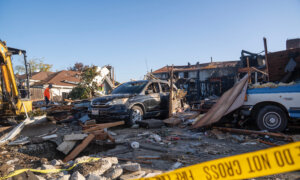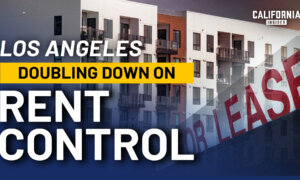New reports from firms such as CBRE and Redfin paint a worrisome picture of both San Francisco’s commercial and residential real estate markets.
Commercial real estate firm CBRE reported April 9 that the vacancy rate in the city’s office market hit 36.7 percent in the first quarter of 2024, up sharply from the 29.4 percent CBRE reported in the first quarter of 2023.
Although industry leaders in the Bay Area say the market could be on the cusp of recovery in 2024, in part due to the advent of artificial intelligence firms signing leases in the city, SFGATE has over the past year reported on several high-profile buildings selling at a fraction of their previous value:
- A four-story start-up hub at 410 Townsend St. in the SoMa neighborhood sold this month for $22 million, about one-fourth of the $86 million it garnered just five years ago;
- An 18-story office tower near the city’s waterfront at 201 Spear St., whose previous tenants included Google and WeWork, was in November 2023 slated to sell for $121 million, less than half of what it sold for a decade ago;
- Two blocks away, an 11-story office building at 60 Spear St. had most recently been assessed at $121 million but was bought in August 2023 by Presidio Bay Ventures for $41 million—roughly two-thirds less. The building, which housed a Walgreens store that closed in 2022, was at the time 30 percent occupied and forecast to be vacant by 2025;
- Nearby 180 Howard St., a 13-story office building owned by the State Bar of California reportedly sold in June 2023 for about $62 million, 27 percent less than expected;
- A 22-story office building with high vacancy at 350 California St. in San Francisco’s Financial District reportedly sold in May 2023 for about three-quarters less than its previous estimated value;
- At about the same time, 550 California St. sold for less than 50 percent of the amount Wells Fargo paid for the 13-story building in 2005.
Bargain hunters have reportedly been looking to take advantage of opportunities in the downtrodden market, even as major layoffs in high tech have dominated headlines over the past year.
Wealthy investor Neil Mehta, for instance, quietly purchased seven buildings in cash sales spanning three blocks between Clay and Pine streets in the city’s Upper Fillmore district so far this year, the San Francisco Chronicle reported April 15.
Speaking to the many vacant storefronts and restaurants in downtown San Francisco, Louise Dawson, partner at Vandermade Commercial, said San Francisco landlords have pressured one another not to lower leasing prices—even when there are vacancies. Landlords were concerned that if lower rents were negotiated during the COVID pandemic, for instance, they could end up locked into low-price leases for a decade, she said.

Nearly 18 percent of homes that sold in San Francisco during the three months ending February 29 sold at a loss. Above, homes stand in front of the city skyline on June 9, 2023. (Justin Sullivan/Getty Images)
“Restaurants and retail are getting all the headlines, but landlords during COVID didn’t get a lot of attention, and they were the ones that were paying these mortgages and not getting any rent,” Ms. Dawson said. “We’re going to start seeing the backlash on that this year.”
Asked what that backlash could look like, Ms. Dawson said many large properties could begin defaulting on bridge loans that are now coming due.
“It’s the beginning,” she said. “I think you’re going to see a lot of properties go back to the banks.”
“San Francisco’s Financial District is still dead, and those buildings are empty,” Ms. Dawson added. “What are we going to do with those buildings?”
Ms. Dawson, who has brokered numerous restaurant sales and leases over the past few decades, said small businesses are also selling at historical lows, citing a restaurant she managed the sale of in 2006 at $350,000 now selling at $90,000.
While not hit as hard as commercial real estate markets, San Francisco’s residential market has also declined in value for sellers.
Nearly 18 percent of homes that sold in San Francisco during the three months ending Feb. 29 sold at a loss, according to a report by Redfin.
That’s a higher share than any other metropolitan area, and more than four times the national share of 4.3 percent, according to Redfin’s analysis of county records and Multiple Listing Service data across the 50 most populous U.S. metro areas. In San Francisco, the typical homeowner who sold at a loss parted with their home for $155,500 less than they bought it for, the largest dollar loss of any metro area.
San Francisco’s market is stumbling more than other parts of the Bay Area, Redfin agent Christine Chang said in a press release.
“Home prices have fallen from their peak, especially when it comes to condos,” Ms. Chang said. “It’s not just because mortgage rates are high. San Francisco has lost some of its appeal post-pandemic. A lot of tech employers and big-name retailers have moved out of the city, and some of my clients have reported they’re leaving the area because they don’t feel as safe as they used to.”
More than 1,302 San Francisco residential properties—including single- and multi-family homes, apartments, condominiums, and lots—were listed for sale on Zillow as of April 18. Although San Francisco homes typically sell fast—22 median days on the market, according to Redfin—more than 500 of the Zillow listings have been open for more than a year.
A two-bedroom, two-bathroom condominium at 1075 Market St., adjacent to the headquarters of X Corp. (formerly Twitter), made headlines in Newsweek April 15 for selling at $675,000—about half the price it was purchased for just five years ago. A studio in the same building was listed this week at $299,000.
Nonetheless, most sellers are still earning money on their home sales.
San Francisco remains among the most expensive and competitive real estate markets in the nation, in part due to its persistent lack of inventory.
Because of those higher prices, Redfin’s data show homes in San Francisco sell for more money overall than most other major metro areas. The median sales price from December to February was $1.41 million, down 15 percent—or a quarter of a million dollars—from a peak of $1.66 million 2022, according to Redfin.















